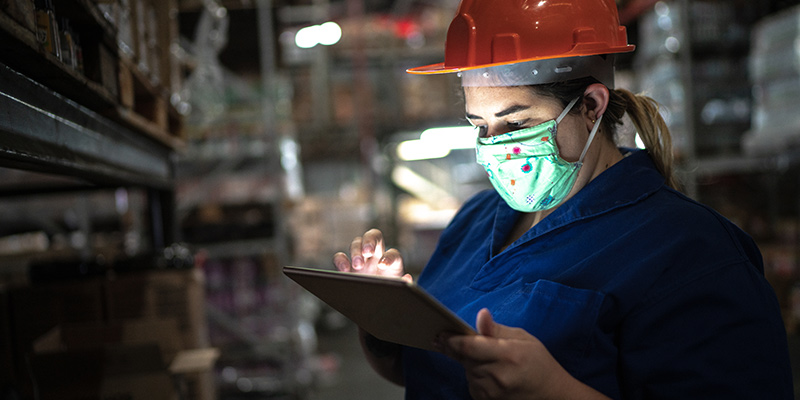
Energy efficiency is typically embraced by organizations with foresight—people who think long-term and understand the wisdom of investing in sustainability.
Lately, long-term thinking is difficult, as we deal with the immediacy of the COVID-19 pandemic. While many organizations are still very interested in having conversations about implementing energy efficiency measures, there are also a lot of questions.
No matter what is taking place, organizations still need to prepare for short-term changes and long-term shifts within the retrofit industry and specifically in the field of energy efficiency. So, how are organizations meeting today’s challenges and opportunities while positioning themselves for future success?
What Are Today’s Challenges and Opportunities?
Because the retrofit industry is so interwoven with general workplace and economic trends, it’s constantly being buffered by strong winds of change. Here are a few aspects of today’s energy retrofit business owners must consider:
Facility Usage: Prior to COVID-19, businesses were looking at utility and space and utilization within commercial buildings. Now with so many people working from home, it’s possible that even after the current crisis passes, many companies may realize they can function well with smaller spaces and more remote staff. With that smaller space, however, may come fewer concerns about energy efficiency.
Incentives to Change: Regardless of what happens in the short term, one thing we know for certain is that energy technology is changing. It’s estimated that by 2035, 90% of the population will have converted over to LED lighting. Changing to LED lighting is no longer a nice-to-do; it’s a must-do. Businesses that adapt slowly risk losing out on helpful external incentives such as rebate programs.
The Question of Cash: Many businesses may be cautious about making large cash outlays at the moment, out of concern over what is happening in the economy. Cash is king right now, and retrofit companies that offer financing or lighting as a service can create a strong win-win situation. These packages can enable their customers to update their facilities now so they are primed for an economic recovery in the future—without having to sacrifice today’s cash flow in the process.
Reasons to Retrofit Now
Fortunately, it’s not an exaggeration to tell clients there has never been a better time than now to engage in a retrofit project.
For example, every vehicle owner knows that at some point, the costs of repairs outpace the value of the car. Energy efficiency is similar. As more buildings are converted to LED lighting, the market will respond: Energy-efficient lighting will become less expensive—while the supplies and maintenance for traditional lighting will become both more expensive and more difficult to obtain. At some juncture, the extra energy costs plus the maintenance, repair and operating costs will make a retrofit a much more economical option.
There’s even another, simpler reason to consider starting a retrofit project now: the sheer ease of getting everything together. When companies in the past have gradually rolled out retrofit projects, they often find they have the headache of managing multiple manufacturer warranty programs. In contrast, now is an excellent time for companies to start with a clean slate and a pursue a complete retrofit solution that enables them to maintain their warranty, maintain their light levels, and standardize the light sources across the building rather than the spotty, piecemeal lighting they may have now.
What’s Coming Next?
While it’s difficult to focus on tomorrow considering everything that’s happening right now, retrofit businesses can look forward to exciting developments on the horizon that will completely transform the way companies think about their lighting.
As sustainability continues to move mainstream and companies see the massive savings they can enjoy as a result, they’ll begin to challenge themselves to lower energy costs even more. This is where advanced technology can really shine. Many of the newest technologies in LED lighting are equipped with IoT sensors and devices that can help companies:
- Better understand lighting usage and reduce the number of lights that are constantly on.
- Track assets and the movement of both items and people.
- Implement better security, by way of remotely controlling lighting to foil attackers and protect occupants.
The good news? This technology does not need to be complicated. We’ve all seen poorly implemented control systems where the building’s occupants need to read a manual simply to adjust the lighting brightness. Manufacturers are learning from that mistake and are working to simplify their controls, trending more toward a user experience like that of an Amazon Echo or Google Home device. Retrofitters will lean toward these user-friendly options for their clients, greatly decreasing the risk of a frustrating learning curve.
Another trend coming our way is an increased interest in alternative energy. Interestingly, during times of crisis, we receive more questions about solar-powered lighting, as more companies look for ways to decrease their dependence on the grid. While there will always be ebbs and flows in this demand, the falling cost of solar energy equipment ensures that alternate energy will continue to be a factor at play.
Lastly, we anticipate that lighting retrofitters will increasingly turn to software adoption and deployment, improving their audits and their success. At our own company, we have benefited greatly from using SnapCount. Having the utility rebate program built in is incredibly convenient, and it’s allowed our entire team to become better, more accurate auditors. It’s top-notch software that has really helped us impress our customers.
So, there may be a lot of current questions about the retrofit industry today and how it will change tomorrow. But retrofit companies who remain flexible, efficient, and informed will be in an excellent position to take advantage of the trends and tools that will spell success in the years to come.






Share this post: